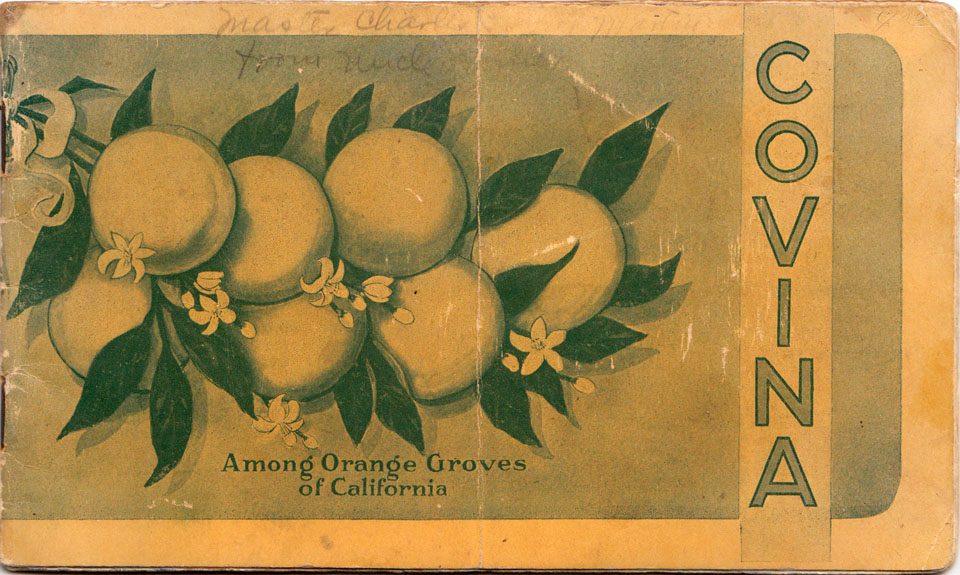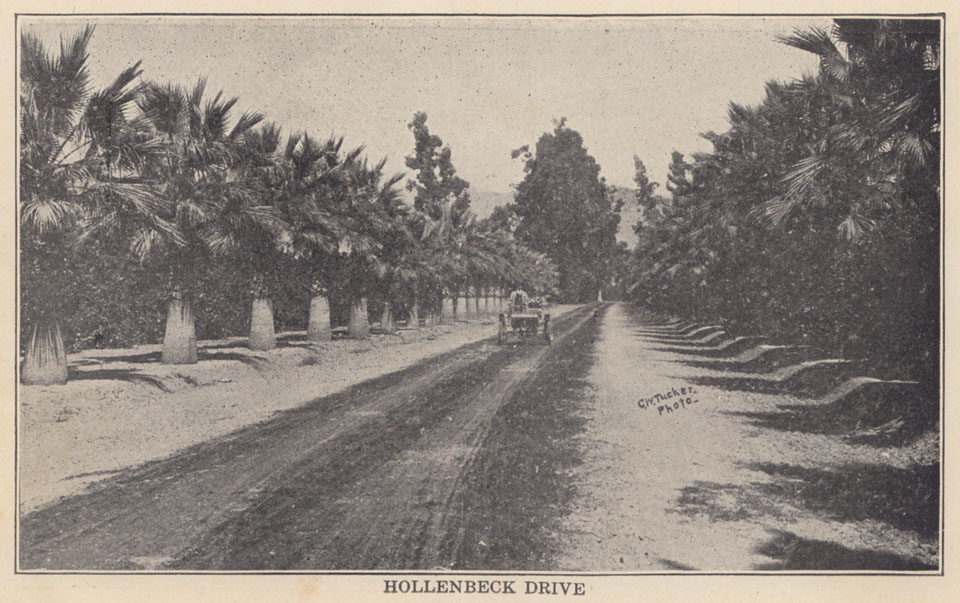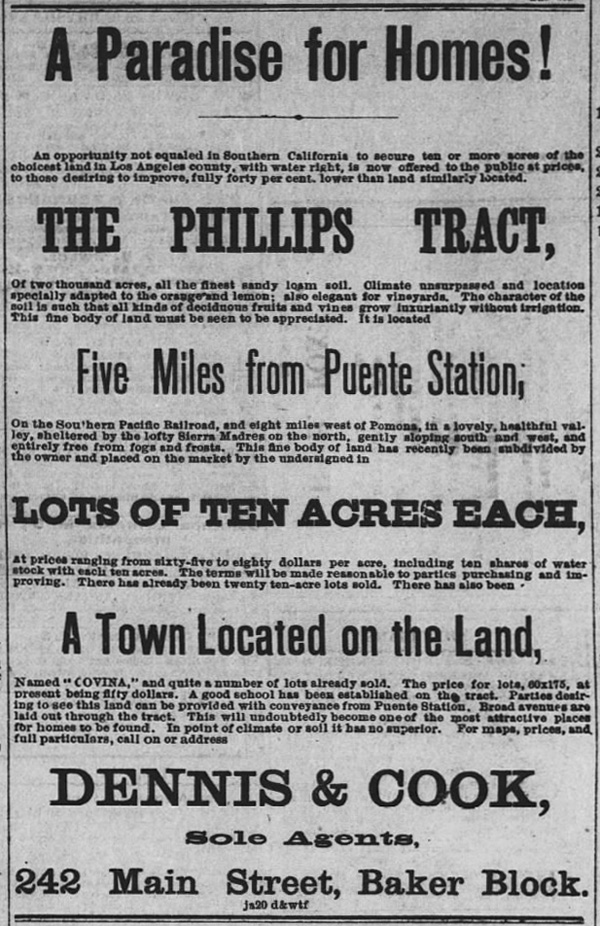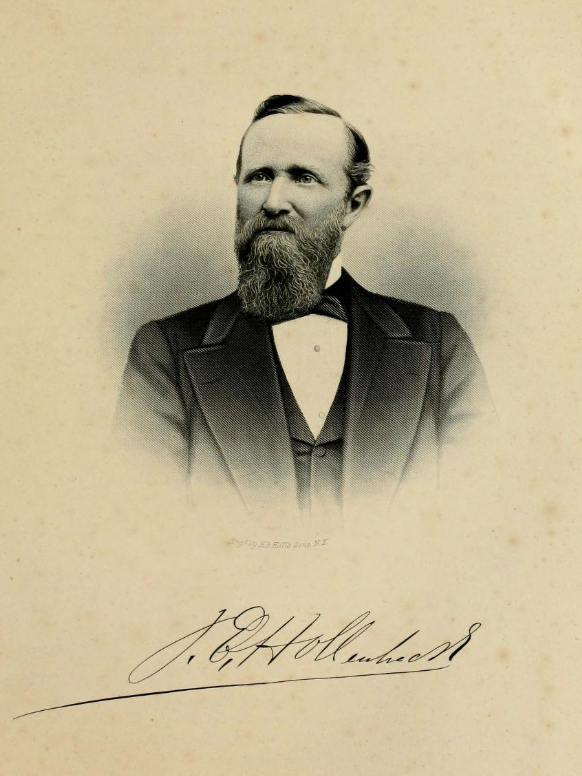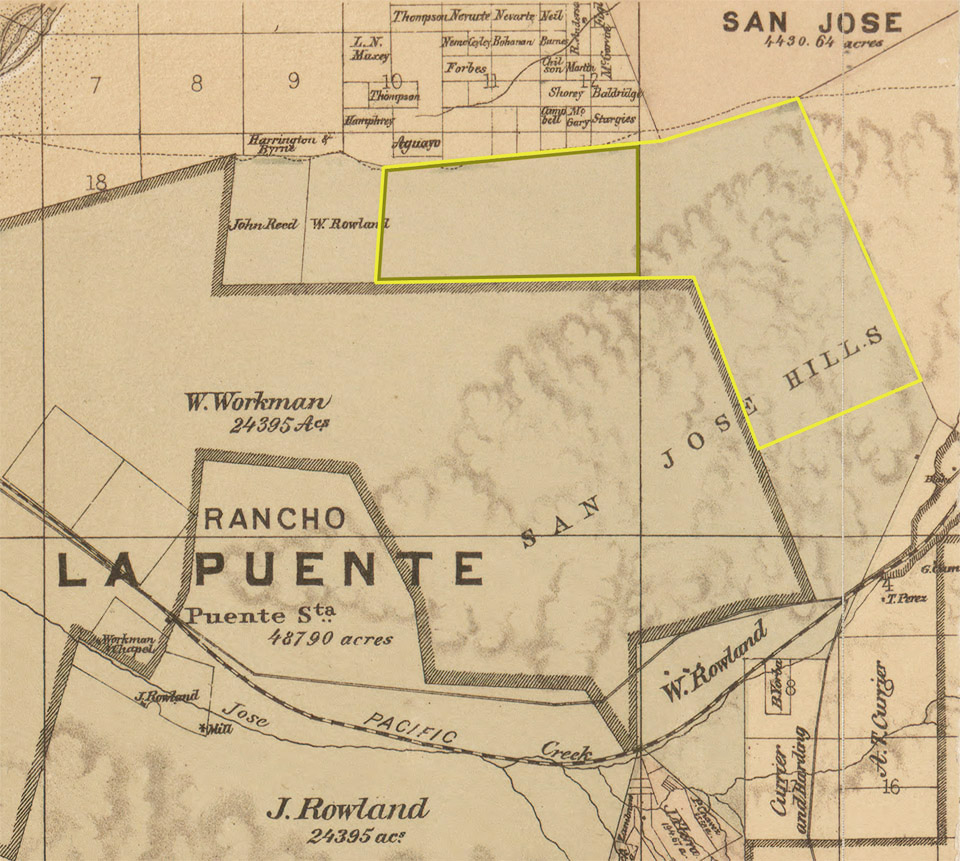One of the "facts" you'll find in every history of Covina is that in 1882, J. E. Hollenbeck sold 2,000 acres of his land in Rancho La Puente to J. S. Phillips for $30,000 where the latter founded Covina in 1885. Problem is, I've never been able to find any legal documentation of that transaction.
However, just recently I did find this conveyance involving Hollenbeck and Phillips, but it isn't at all what I was expecting. In fact, when I saw it, it made my jaw drop, because if the origin story of Covina is true, it shouldn't exist.

Legal notice in the Los Angeles Times of January 14, 1885.1
As you can see, in eighteen-eighty FIVE, Hollenbeck and Phillips jointly conveyed 195-3/4 acres in Rancho La Puente to James F. Houghton – trustee of the Pacific Mutual Life Insurance Co. of California – to secure a loan to J. S. Phillips in the amount of $40,000. (Put a pin in that for future reference.)
What's significant is that Hollenbeck couldn't convey title in real property he didn't own, so this a clear indication he didn't sell his land to Phillips in 1882, after all, or at least he didn't sell it outright. It appears he only sold a share of his ownership, and that Hollenbeck was actually a "silent partner" in the Phillips Tract all along, right up until his death in September, 1885.
I also recently discovered something else that never made it into the history books. Pflueger2 chronicles the events in J. S. Phillips' life from 1882-1889 in often meticulous detail, but unless one attends carefully, a reader can easily skim past what ultimately happened to the founder of Covina, and even the single sentence devoted to the subject turns out to be a soft-pedaled vaguery of the actual turn of events that Phillips fell victim to in the end.
Quoting from page 204, this is all Pflueger has to say about the cessation of Joseph S. Phillips' association with the town he fathered:
He lost a large segment of his fortune in an investment in a northern California mine and was forced to sell his holdings in Covina and move elsewhere to regain his fortune.2
Well, as Paul Harvey used to say, you're about to find out "the rest of the story."
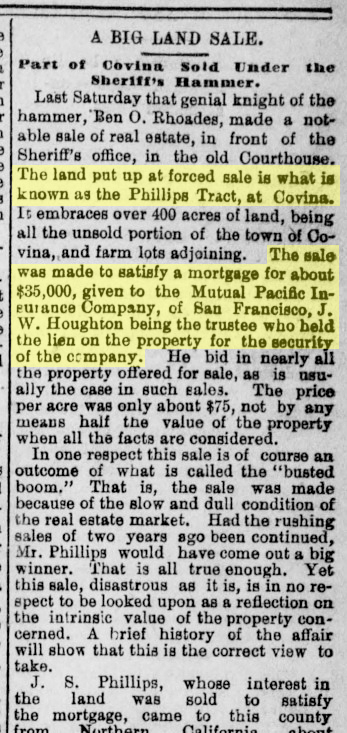
It was front page news in the June 3, 1889, edition of the Los Angeles Herald.3
First of all, notice there's Houghton and that life insurance company again: the same one that loaned Phillips $40,000 four years before. And apparently, judging by the remaining value of the mortgage, as mentioned in the newspaper article, Phillips had only managed to reduce his debt by $5,000 in all that time.
I suppose technically it was not inaccurate for Pflueger to say Phillips was "forced to sell his holdings," but the legal term "forced sale" is a synonym for foreclosure, which conveys a distinctly more negative connotation. With his equivocal phrasing, Pflueger almost made it sound like Phillips simply sold off his assets and moved on, but the hard fact of the matter was that Phillips had taken out a loan, he defaulted on repayment, and his remaining Covina properties were declared forfeit and seized.
Heretofore, I would wager that not a single student of Covina history alive today was aware of Phillips' actual financial fate, or that Hollenbeck had retained ownership in the Phillips Tract all along. (Both were certainly news to me!)
The full text of the newspaper article is transcribed below.
